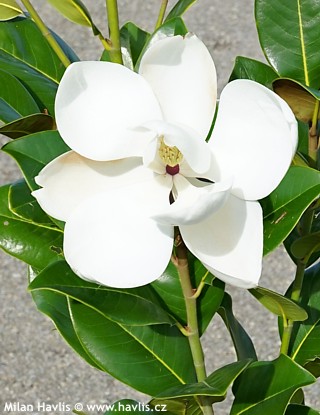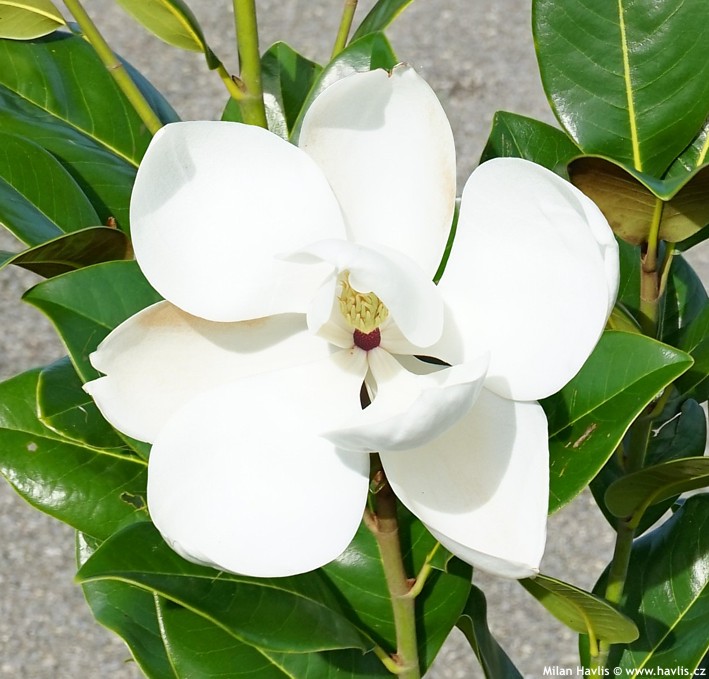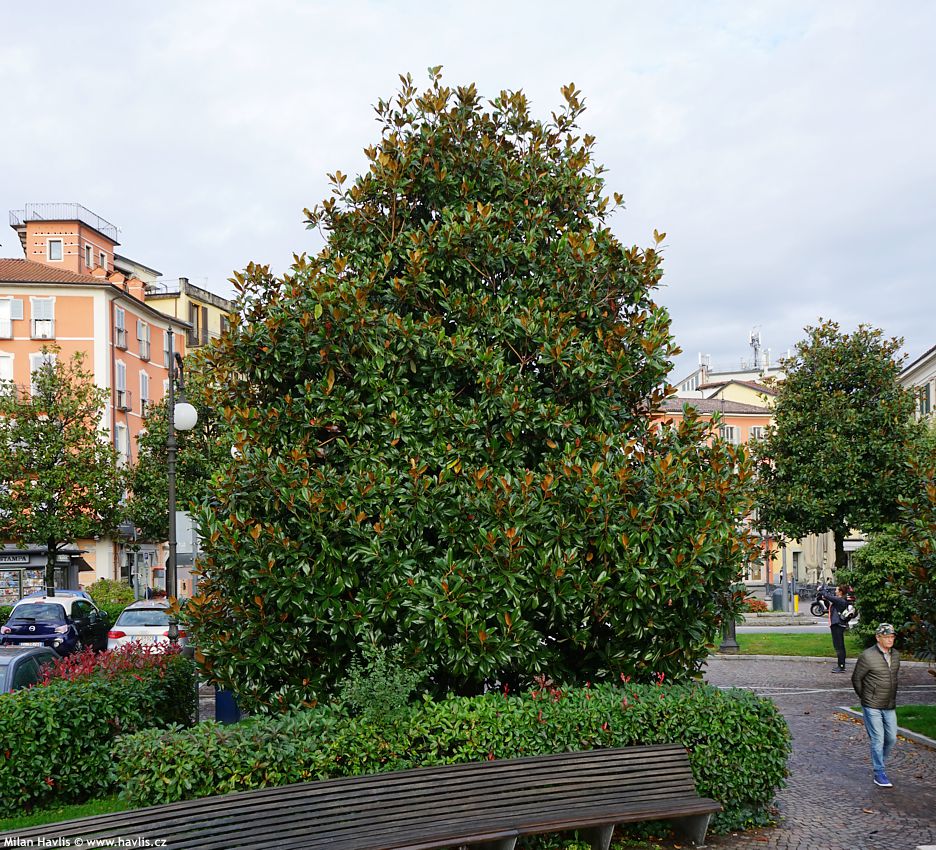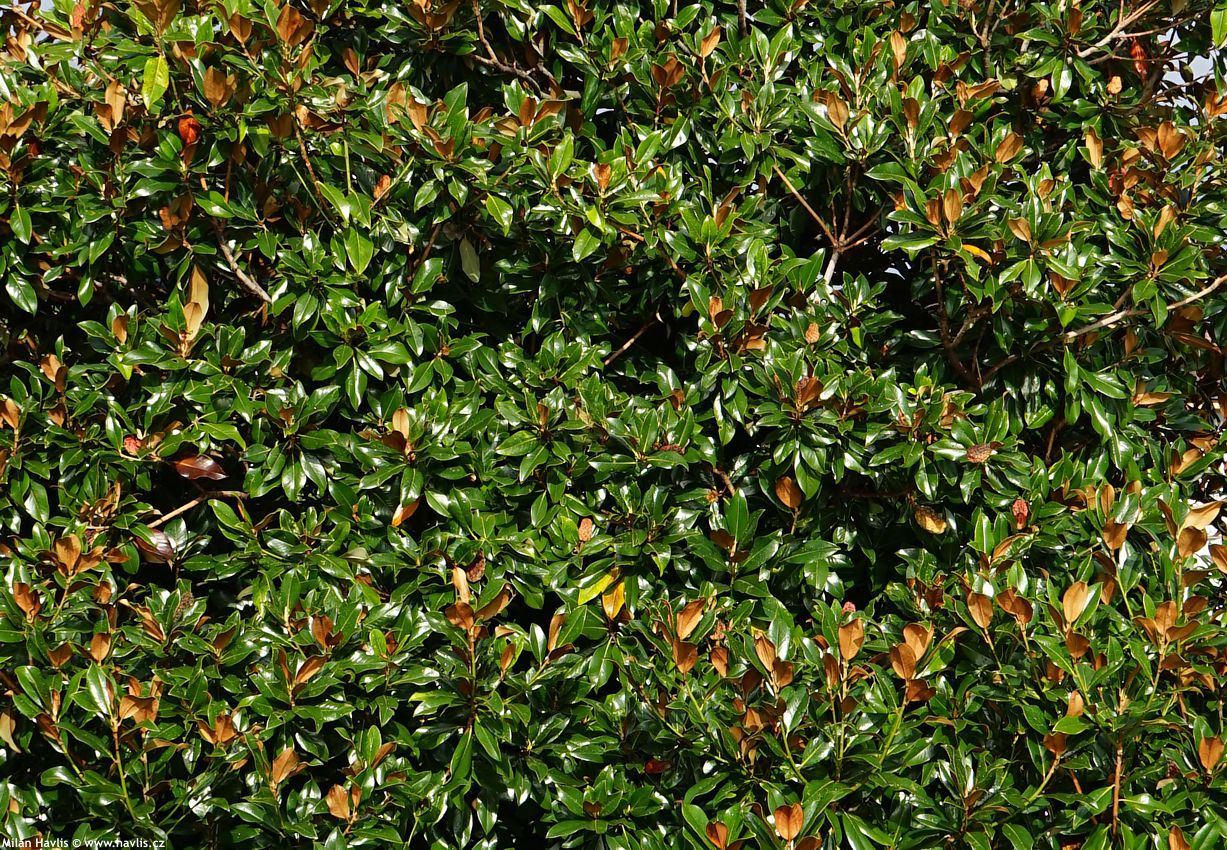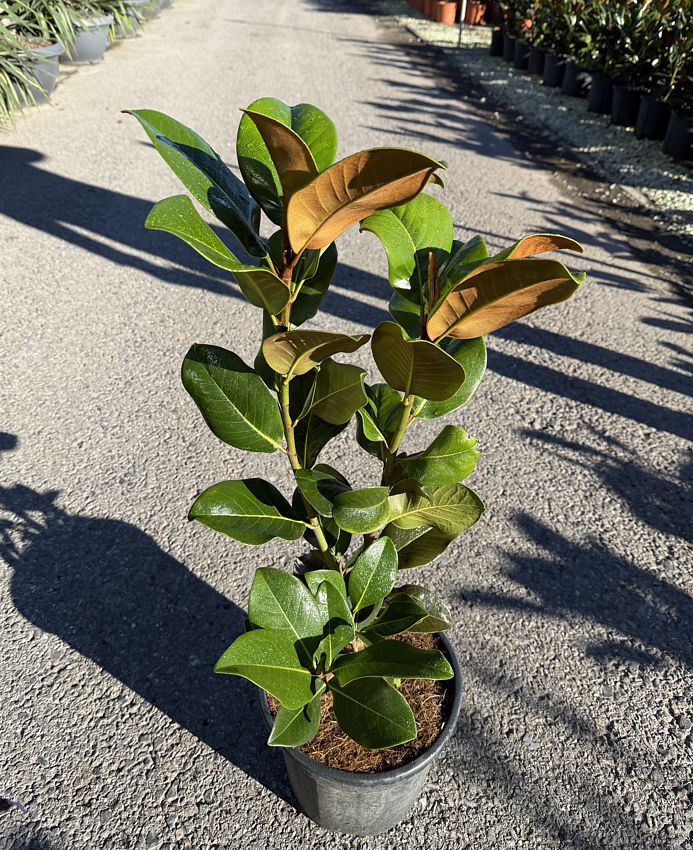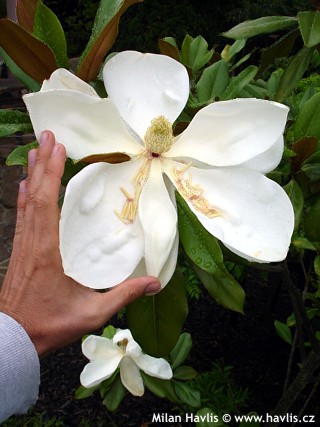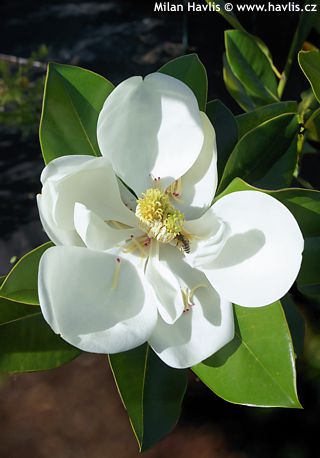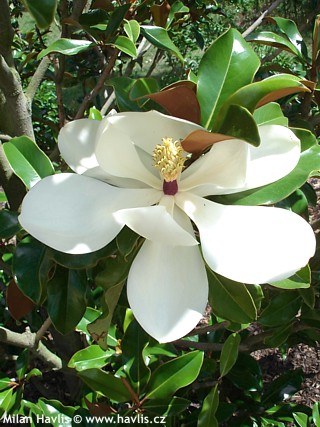Magnolia grandiflora ('24 Below') 'TWENTY FOUR BELOW' southern magnolia, bull bay
Magnolia
Evergreen (southern) magnolias are flowering queens among ornamental trees. We choose the hardiest and most beautiful varieties that can live happily in zones 6 and up. Mother Nature tells us what to grow. Especially extreme weather debris points us at the survivors as if saying "just look! these are the ones worth propagating, not those old tender ones you've been stuck with so far". Do you remember or have the knowledge about the winter of 1985? Unusual cold wave all around the globe, a lot of tender species growing in their home territories cut down to ground level. The same happened to magnolia grandiflora in Knoxwille, Tennessee, USA, where the minimum temperature dropped to -31°C (-24°F) as opposed to typical -17°C common for USDA zone 7 valid for that place. Local hybridizer Frank Galyon, nationally renowned mostly for breeding daffodils, irises, and daylilies, and internationally famous for breeding several beautiful varieties of deciduous magnolias, found one evergreen survivor and named it in honour of the dramatic temperature it withstood.
Southern magnolia Twenty Four Below is next to Edith Bogue variety one of the two hardiest evergreen magnolias known to trade. It produces large, 24-28 cm across, creamy white, lotus-like, and fragrant flowers from July until September. Their scent attracts not only bees and other insects, but also most perfume producers and all passersby, especially in late afternoon and early evening when it releases its rich, sweet and citrus fragrance several meters around. Each flower opens for one or two days only but is followed by another so the whole plant produces flowers from June until September. The older and stronger the plant the more flowers appear in continuity.
Its evergreen leaves are narrowly ovate to broadly elliptic, acuminate, leathery, deep green, highly glossy, and covered with cinnamon brown, suede-like indumentum underneath which protects them against drying winds. It grows medium fast (30-50 cm per year) into a well-branched, large, oval to rounded shrub, or it can be trained into a mid-sized tree with a rounded canopy. For a denser habit and smaller size it can be pruned when young and later every 3-5 years in late April. As it flowers at the ends of ripe wood its blooming may be shy the year you prune it.
Southern magnolia is very hungry. It needs acidic, fertile, reasonably drained but not purely sandy soil. Clay in lower parts is beneficial. We strongly suggest using mycorrhizal fungi for its roots, they work miracles especially for large plants whom they help establish without any signs of defect. Now bring your attention to fertilizing, most importantly during its first three or four years after transplanting it needs regular feeding in order to keep all its foliage and to produce flowers freely. Use any sort of fertilizer for ericaceous plants and apply it according to instructions from May until late July. Keep the plant’s roots constantly moist during this period and don’t forget to water it also in winter when the ground is not frozen. Then it will fully establish and will not suffer from summer droughts and will not need extra feeding as its roots will be deep enough to find their own food. Choose only sunny locations, possibly with winter shade that may be welcome in areas with long-lasting winters. Extremely hardy to -31°C (USDA zone 5a) for a limited period of time, and generally suggested for zones 5b and higher.
Last update 27-01-2019
Goods are shipped all over Europe. For Russia and U.K. and for further details please read about SHIPPING OPTIONS HERE.
Are you interested in a serious discount for orders NOV-FEB? Check your options here.
THE PRICES INCLUDE VAT of 15%. For quick conversion you can use 1 CZK = approx. 0.04 EUR
- STANDARD QUALITY - Plants of this group are 1st class quality with number of branches and overall density adequate to their size and age, considering they were container grown.
- DE LUXE QUALITY - This label guarantees a luxurious quality of manually selected plants that, compared to their height and age, are exceptionally dense and beautiful.
- EXTRA - These plants are usually mature and bigger specimens with exceptional overall appearance.
- STANDARD (as described in the plant form) means a tree with a trunk of 190-210 cm and a crown at the top, unless specified differently. The commercial size for trees is their girth measured in the height of 1m from ground.
- HOBBY - These plants are of the same quality as our standard-quality plants but younger and therefore cheaper.
- SHRUB - a woody plant with branches growing bushy from the ground level.
- HALF-STANDARD or MINI-STANDARD - a small tree with shorter trunk, its size is usually specified.
- FEATHERED - These are trees with branches growing already from the base of the trunk and up along the stem.
- GRASSES and PERENNIALS - Sizes given usually read the diameter of the pot or the clump, as specified.

































